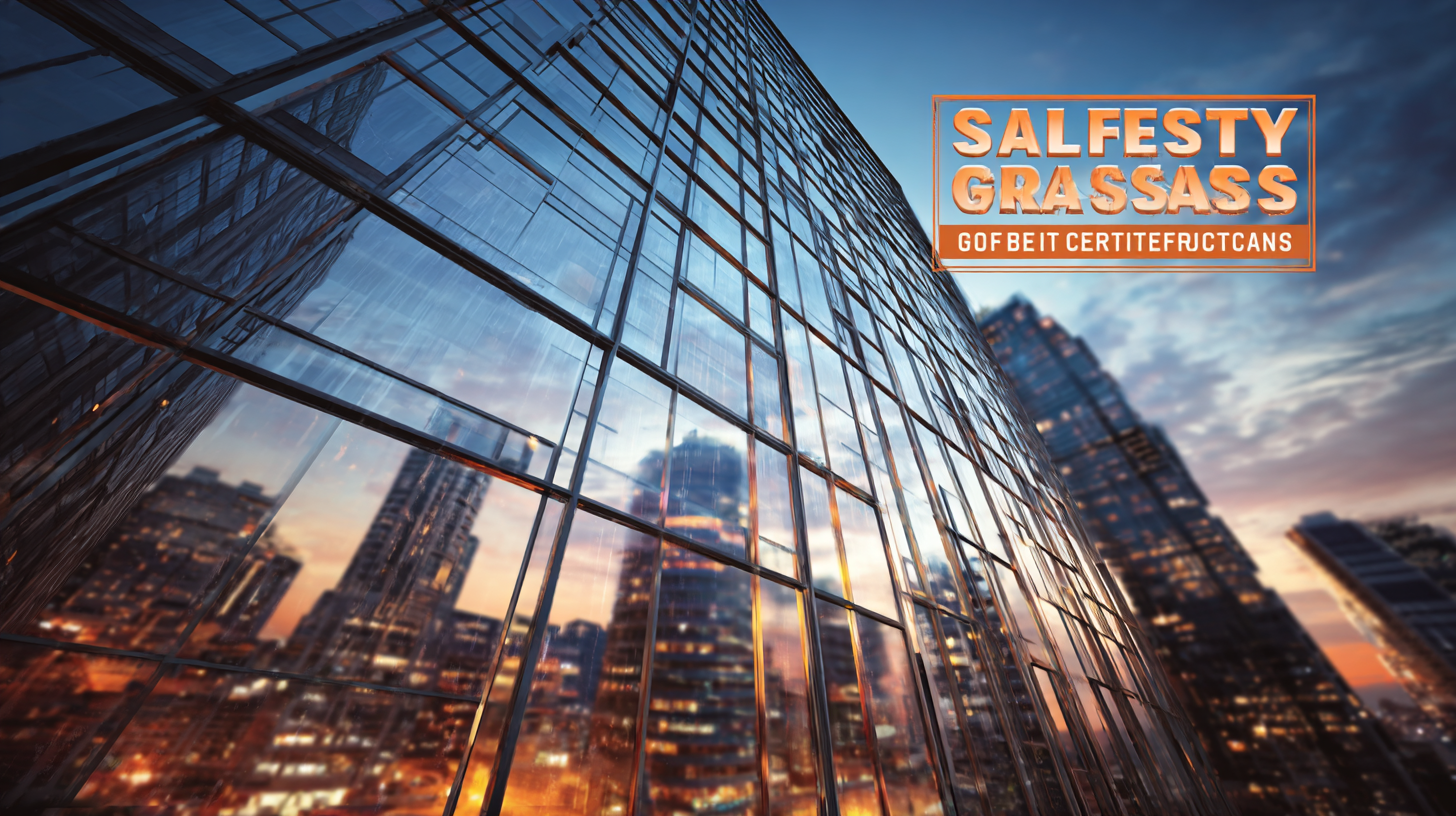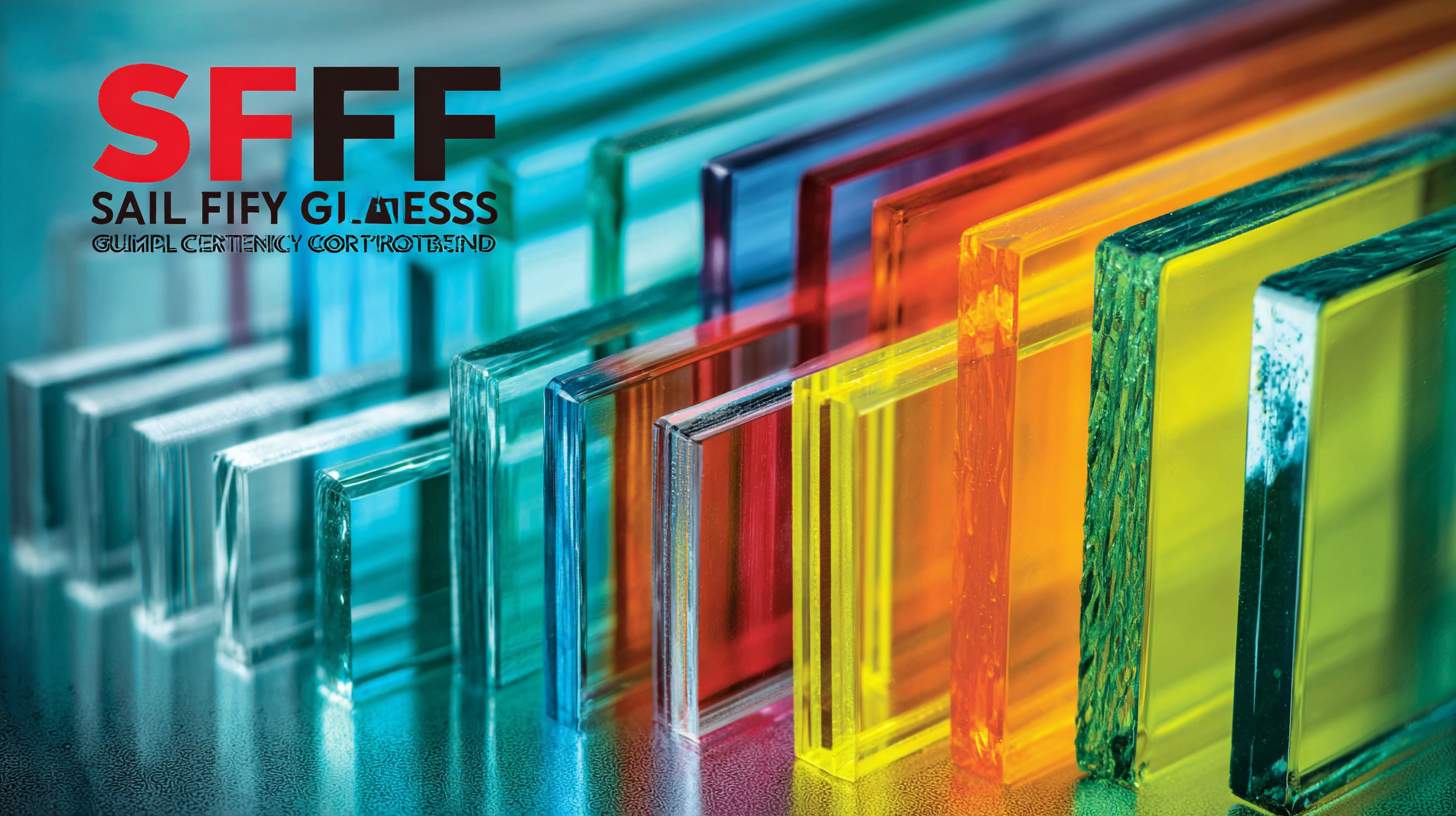
Ultimate Guide to Best Safety Glass Panels with Global Import Export Certifications
The demand for Safety Glass Panels has surged in recent years, driven by an increased emphasis on construction safety and aesthetic appeal in both residential and commercial buildings. According to a report by Grand View Research, the global architectural glass market is anticipated to reach USD 183.28 billion by 2027, with safety glass as a key segment due to its durability and impact resistance. As a result, manufacturers are responding by enhancing their production capabilities, often achieving global import-export certifications to meet international standards. In light of these trends, this ultimate guide will navigate through the best safety glass panels available, highlighting how world-class Chinese factories are setting benchmarks for superior manufacturing and rigorous safety compliance, ultimately contributing to more secure and visually pleasing environments.

Key Attributes to Look for in Safety Glass Panels with Certifications
When selecting safety glass panels, understanding key attributes is essential to ensure you are making an informed choice. First and foremost, look for compliance with international safety standards. Panels should carry certifications such as the ANSI Z97.1 or EN 12150, which guarantee that the glass has undergone rigorous testing for strength and durability. This not only protects consumers but also increases the intrinsic value of the product, giving manufacturers a competitive edge in global markets.
Another vital attribute is the type of security features integrated into the glass. Laminated glass, for instance, consists of multiple layers that can endure shocks and impacts without shattering, making it ideal for high-traffic areas. Additionally, consider the transparency and clarity of the glass; high-quality safety panels should provide unobstructed views while minimizing glare. Moreover, UV protection is paramount, as it helps preserve furniture and interiors from sun damage, enhancing the longevity and aesthetic appeal of spaces where the glass is installed.
Ultimate Guide to Best Safety Glass Panels with Global Import Export Certifications
| Key Attribute | Description | Certification Type | Industry Standards |
|---|---|---|---|
| Impact Resistance | Ability to withstand force without breaking. | ANSI Z97.1 | ASTM C1036 |
| Thermal Resistance | Resistance to thermal stress from temperature fluctuations. | ISO 12543 | ASTM E1300 |
| UV Protection | Filters harmful ultraviolet rays. | ASTM D1003 | ISO 4892-3 |
| Sound Insulation | Reduces noise transmission between spaces. | ASTM E413 | ISO 717-1 |
| Shatter Resistance | Prevents glass shattering into pieces upon impact. | ANSI Z97.1 | CPSC 16 CFR 1201 |
Top Global Import Export Certifications for Safety Glass Panels
When considering safety glass panels for import and export, understanding global certifications like BIS in India is crucial for foreign manufacturers. The Bureau of Indian Standards (BIS) certification has become mandatory for various regulated sectors, ensuring that products meet essential quality and safety standards. This certification is not only a legal requirement but also enhances the credibility of manufacturers in a competitive market. With significant projected growth in the flat glass market, expected to reach USD 280.64 billion by 2030, obtaining the right certifications can be a strategic advantage for companies aiming to expand their market reach.
Tips: Ensure you familiarize yourself with the specific regulations applicable to your product within your target market. Conduct thorough research to navigate the certification process effectively, minimizing potential delays and costs. Additionally, staying updated on industry trends and consumer demands can help align your product offerings with market expectations. For those venturing into the global market, obtaining internationally recognized certifications can significantly enhance product acceptance and trust among customers.

Comparative Analysis of Safety Glass Panels in Various Markets
When evaluating safety glass panels across various markets, it’s essential to consider the differences in regulations, quality standards, and performance specifications. According to the global glass industry report by the Glass Association, the demand for safety glass is expected to grow at a CAGR of 7.5% from 2023 to 2030, driven primarily by the construction and automotive sectors. Different regions have varying certifications—such as ANSI Z97.1 in the US and EN 12150 in Europe—ensuring that safety glass panels meet stringent quality checks.
For those looking to invest in safety glass panels, here are some tips: first, check for certifications that align with local regulations to ensure compliance and safety. Second, consider the glass’s thermal and impact resistance ratings, which can significantly affect its longevity and practicality in commercial or residential settings. Lastly, partnering with distributors who have established global import-export credentials can facilitate access to a wider range of high-quality products.
In a comparative analysis of market availability, the Asia-Pacific region has seen significant advancements in safety glass technology, with countries like Japan and South Korea leading in innovative production techniques. Meanwhile, North American markets are adapting to increased regulations, emphasizing the need for manufacturers to stay ahead of safety standards to remain competitive.
Innovative Solutions for Enhancing Safety Glass Panel Performance
In today's rapidly evolving landscape, enhancing the performance of safety glass panels is becoming increasingly critical. Innovative solutions are emerging that not only focus on the durability and resilience of safety glass but also integrate advanced technologies to promote user empowerment, particularly for individuals with disabilities. These safety glass panels can be enhanced with smart assistive devices, offering features that improve accessibility and provide a heightened sense of security.
Recent advancements in materials science have led to the development of safety glass panels that incorporate fire-resistant and impact-proof technologies. Similarly, cutting-edge innovations, like super-absorbent gel shields that protect structures from wildfires, exemplify how new materials can significantly improve safety standards. The intersection of safety glass technology and environmental considerations is paving the way for more effective energy-saving solutions, aligning with broader sustainability goals while ensuring optimal protection in various settings. By leveraging these innovative approaches, manufacturers and consumers alike can achieve enhanced safety without compromising on performance or environmental responsibility.
Regulatory Compliance and Standards for Global Safety Glass Imports
When it comes to the import and export of safety glass panels, regulatory compliance is paramount. Different countries have established stringent standards to ensure that these products meet safety, quality, and performance benchmarks. For instance, in the United States, safety glass must adhere to the ANSI Z97.1 and CPSC 16 CFR 1201 standards, which outline the testing requirements for shatter-resistance and impact safety. Similarly, in the European Union, the EN 12150 standard governs tempered glass, ensuring it can withstand thermal and mechanical stress without breaking dangerously.

Importers must also be aware of certification mark requirements, which serve as proof that the glass has been tested and meets local regulatory standards. These certifications not only facilitate smoother customs clearance but also assure end-users of the product’s reliability and safety. Ensuring compliance with these regulations can prevent costly recalls and enhance reputation in the competitive global market. Therefore, it’s essential for businesses involved in the safety glass panels trade to stay informed about evolving standards and actively seek certifications that bolster their credibility in the market.
